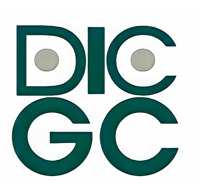The sachet revolution can transform financial services in India
Even though the government-backed financial inclusion drive has resulted in a spike in the number of bank account holders in India, metrics regarding active financial participation remain abysmal. Nearly half of bank accounts remain inactive, insurance penetration continues to be well below the global average and there is a huge gap in MSME (Micro, Small and Medium Enterprises) credit demand and availability. This indicates the need for even more innovative solutions to transform the underbanked population into truly engaged financial stakeholders of the fastest-growing economy in the world. In order to deliver financial services to the underserved population, the banking industry is taking cues from fast-moving consumer goods (FMCGs), telecom and direct-to-home (DTH) companies. These industries were able to enhance their geographical and demographic reach and boost their sales dramatically through small package offerings, commonly referred to as sachets. The key factor behind the success of the sachet model is the ‘transition from luxury to affordability.’ Sacheted coffee, teas, cellphone credits, detergent, toothpaste, shampoos, spices and snacks becoming available everywhere for consumption by the bottom of the pyramid population, who otherwise would not have been able to buy these expensive products in regular packaging. A similar approach to customise financial products has the potential to transform the finserv industry as well.
While financial institutions have taken significant efforts to ramp-up the last-mile connectivity of their financial products, they continue to struggle with low adoption of instruments due to the lack of commoditization of products. As a result, banks are trying to re-imagine their products further by incorporating some key attributes like small-ticket size, short tenure and need-based targeting. The sachet model is suited to for all major financial products such as lending, insurance and mutual funds through nano-finance, affordable insurance and micro-investments products, respectively. Moreover, with smartphone-based platforms and digital technology becoming ubiquitous, the disbursement of easy credits and the transformation of small savings into investments is no more restricted to certain geographies or the ambit of financial inclusion.

Nowadays, with technology enabling deeper need understanding, easier last-mile distribution and faster onboarding - the sachet revolution in financial services is gaining momentum at a rapid pace. From credit to insurance, sachet financial products are becoming increasingly commonplace at kirana stores, paan shops and e-commerce websites. Going ahead, as financial institutions further improve upon the ease-of-use, interoperability, real-time decision making and processing, data security, and overall service discovery and fulfilment of needs, sachet offerings could become the real drivers of financial inclusion as well as economic activities in the country.
Disclaimer: Articles published on the website are merely indicative and suggestive in nature and do not amount to solicitation. The contents do not guarantee the desired returns and/or results. Reader is advised to exercise discretion and consult independent advisors for achieving desired result. Visitors to this blog/ website w.r.t products & services offered by RBL Bank Limited herein, shall ensure that the comments / feedback posted shall be restricted to the contents published herein and shall not contain such language that may be un-parliamentary or against any religion, caste, section of society, political view etc. While our endeavor is to publish the comments that are submitted, however, all comments/feedback shall be subject to internal review by RBL Bank Limited. We do not guarantee that the comments that are submitted will be published.













 Personal Banking
Personal Banking  Corporate Banking
Corporate Banking  Prepaid Cards
Prepaid Cards  Credit Cards
Credit Cards Debit Cards
Debit Cards